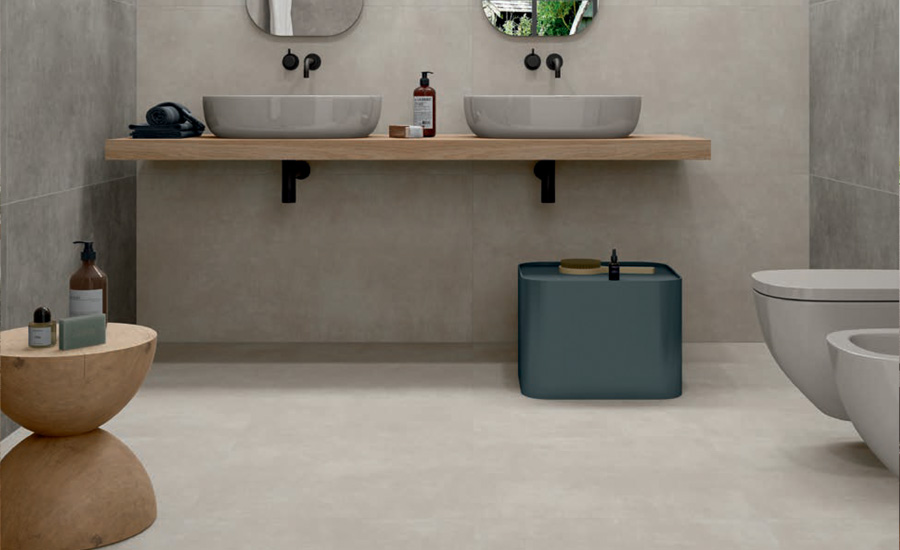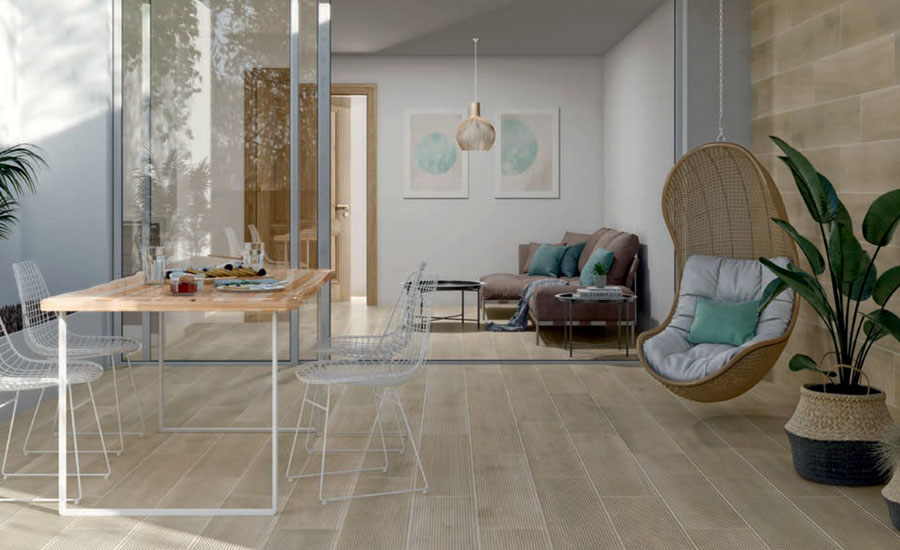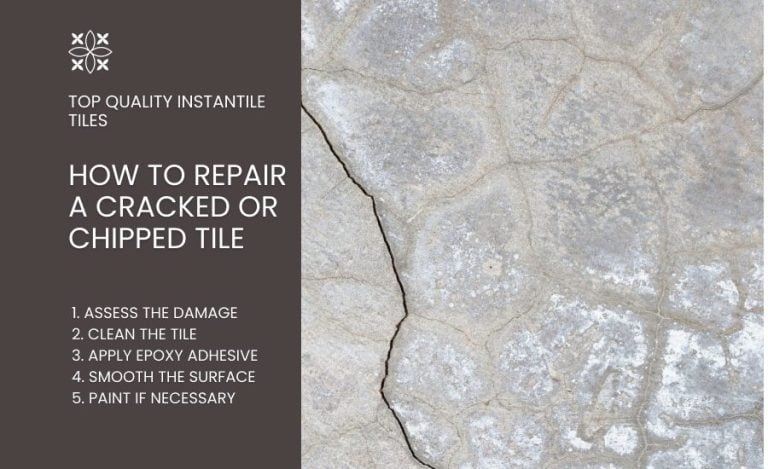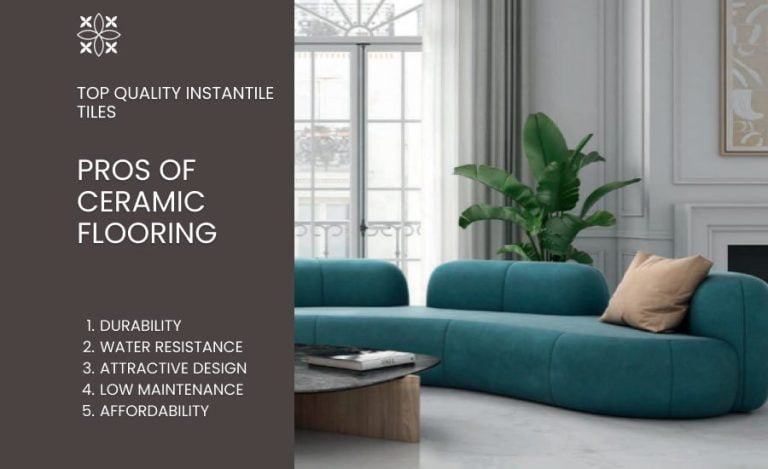Eco-Friendly Tiles Explained: Key Takeaways
- Eco-friendly tiles often use recycled glass, reclaimed wood, or sustainable clay to cut down on resource extraction
- They offer a sustainable alternative to traditional flooring without sacrificing aesthetic or quality
- When choosing sustainable tiles, check for certifications like LEED or GreenGuard to ensure they’re eco-friendly
Looking to create a healthy home environment for children and pets or a commercial space emanating good vibes?
Eco-friendly tiles are a popular option for improving indoor air quality, reducing allergens, and increasing property value.
In this guide, we will:
- Explore the different types of eco-friendly tiles and the benefits they bring to your space
- Discover practical tips to reduce your environmental impact without sacrificing comfort or style
- Share expert guidance on selecting sustainable tiles that align with your lifestyle, design vision, and the unique needs of your space
Eco-Friendly Tiles Explained
Eco-friendly tiles are manufactured with responsibly sourced or recycled materials and energy-efficient production processes.
Their composition typically includes recycled glass, reclaimed wood, or sustainable clay which would otherwise go to waste, reducing the need to extract new materials.
In addition, the production of eco-friendly tiles uses energy-efficient technologies such as renewable energy-powered kilns or water-recycling systems.
A sustainable alternative to traditional flooring, eco-friendly tiles do not compromise beauty or quality.
They come in a wide range of colors, patterns, and finishes, making them a versatile choice for any design project, whether kitchens, bathrooms, patios, or commercial spaces.
Benefits of Eco-Friendly Tiles
Is sustainability the only advantage offered by eco-friendly tiles? Certainly not. Let’s investigate how they can benefit your life if you choose them as a flooring option.
Durability
Eco-friendly tiles are resistant to wear, making them an excellent investment for many years to come. Durable tiles also don’t need frequent replacement, further lowering their environmental footprint.
Environmental Impact
A 2025 study found a growing demand among homeowners for sustainable features in their living spaces.
As people become more conscious of their environmental impact, many are turning to materials that offer both style and sustainability.
Eco-friendly tiles help increase sustainability in several ways:
- Reduced waste: Discarded materials used in eco-friendly tiles get a new purpose.
- Energy efficiency: Using less energy for production results in a smaller carbon footprint.
Health Benefits
Choosing sustainable tiles can also improve your home environment:
- Low VOC: Eco-friendly options emit little to no volatile organic compounds (VOCs), reducing your exposure to harmful chemicals.
- Better air quality: Lower VOC contributes to cleaner indoor air, which is beneficial if you or your loved ones’ health, especially if you suffer from allergies.

Types of Eco-Friendly Tiles
With so many benefits to consider, it’s worth exploring what types of sustainable tiles are out there.
Here are the top types of sustainable tiles you’ll find on the market.
Recycled Glass Tiles
Recycled glass tiles are made from 100% recycled glass from melted and reshaped bottles, windows, and other products.
Their non-porous structure also makes them stain and bacteria resistant.
Durable and easy to clean, recycled glass tiles are great for backsplashes, countertops, and wall coverings.
Reclaimed Wood Tiles
Reclaimed wood tiles are made from salvaged wood such as old barn wood or wooden furniture.
Bringing a sense of warmth and rustic character, they’re used for walls and floors in living rooms and bedrooms, or as accents in kitchens and bathrooms.
As wood is prone to water damage, these tiles require regular sealing.
Cork Tiles
Cork tiles are produced from the bark of cork oak trees, also known as a renewable resource as trees naturally regenerate after harvesting.
Soft and warm in feel, cork is used for covering floors and walls in bedrooms or living areas. It also has natural soundproofing and thermal insulation qualities.
Bamboo Tiles
Bamboo tiles are made from thin layers or strips of bamboo pressed into tile form.
Incredibly strong and resistant to water (after proper sealing), bamboo tiles are used for flooring in homes and commercial spaces.
Read more about bamboo vs. hardwood in our recent article.
Terracotta Tiles
Terracotta tiles are crafted from clay that is fired at a low temperature to produce a natural, earthy tone.
Adding a Mediterranean or rustic touch to your space, these tiles are perfect for indoor and outdoor spaces like patios, kitchens, and bathrooms.
Ceramic and Porcelain Tiles with Recycled Content
These tiles are made from recycled materials like glass, clay, and stone waste.
From kitchen backsplashes to bathroom floors, attractive patterning and easy maintenance make them a popular choice for various residential and commercial projects.
Concrete Tiles
Some concrete tiles contain crushed glass, stone, or fly ash, making them more sustainable with fewer chemicals than traditional concrete.
With a modern, industrial look, they are an excellent choice for outdoor spaces like patios, walkways, and driveways.

How To Choose the Right Sustainable Tiles
With so many sustainable options available, choosing the right eco-friendly tiles for your project can feel overwhelming.
These pointers will help you sort through the options and pick tiles that suit your space.
- Think about intended use: If you are going to place them in wet areas like bathrooms, choose slip-resistant options. If you are planning to cover outdoor areas, focus on durability.
- Check certifications: Look for labels like LEED or GreenGuard to verify if the tiles are eco-friendly.
- Consider aesthetics: Make sure the tiles complement the design of your home, office, shop, or restaurant.
- Think about your budget: Compare different types of sustainable tiles to balance cost and quality.
Work with trusted brands: Choose manufacturers known for their sustainable practices and quality products, like Ceramista.
Shop Eco-Friendly Tiles at Ceramista
Ceramista delivers premium-quality eco-friendly tiles designed for efficiency and sustainability.
Our proprietary INSTANTILE interlocking system allows for installation up to nine times faster than traditional methods, eliminating the need for adhesives and significantly reducing labor time.
Individual tiles can be replaced with precision, without affecting surrounding pieces, minimizing downtime and maintenance costs.
Ceramista tiles offer a responsible, forward-thinking solution for modern construction while minimizing your carbon footprint.
Efficient. Durable. Sustainable.
Eco-Friendly Tiles: FAQs
Are you considering eco-friendly tiles for your home, boutique, or hotel? If you have questions, check out these answers from our tiling experts at Ceramista.
Are eco-friendly tiles good for both residential and commercial spaces?
Yes, eco-friendly tiles are durable and come in different colors and styles, making them a great flooring option for both residential and commercial spaces.
Do sustainable tiles cost more?
While some sustainable tiles can be more expensive initially, their longevity and energy-saving benefits make them a long-term, cost-effective option.
Can I use environmentally friendly tiles outdoors?
Yes, Ceramista offers sustainable tile options specifically for outdoor use. Talk to our team about the best flooring option for your outdoor space.
Do sustainable tiles require special maintenance?
No, you can take care of eco-friendly tiles the same way as you do with traditional tiles. Use a mop and mild, non-toxic cleaners to keep them clean and beautiful.
Can eco-friendly tiles suit various design styles?
Yes, their different colors and patterns turn them into a good addition to various styles, from sleek modern designs to rustic settings.
Can eco-friendly tiles help lower energy bills?
Some varieties have thermal qualities that can help keep indoor temperatures stable, reducing energy costs.
Can eco-friendly tiles be used in densely populated areas?
Yes, eco-friendly tiles are sturdy and resilient, making them suitable for use in high-traffic areas, think kitchens, hallways, and commercial spaces.
How long can eco-friendly tiles last?
With careful maintenance, eco-friendly tiles can last up to several decades.
Can eco-friendly tiles be recycled at the end of their life?
Yes, recycled glass or porcelain tiles can be recycled and used for other purposes at the end of their lifecycle.
Are eco-friendly tiles safe for pets?
Eco-friendly tiles are made from natural, non-toxic materials, which makes them safe for pets. They are also nonslip and can be cleaned easily, which is very important in homes with animals.
Are eco-friendly tiles better than vinyl flooring?
Yes. While vinyl flooring can release harmful chemicals like phthalates, sustainable tiles use non-toxic materials and produce fewer emissions. They also last longer and are more durable. Read more about ceramic vs. laminated tiles in our detailed article.




